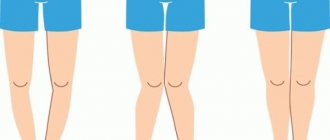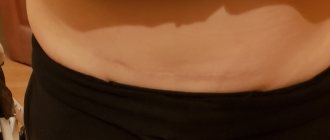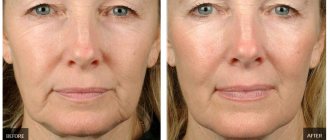In the 90s of the twentieth century, on the basis of traumatology, orthopedics and plastic surgery, a new medical direction was formed - orthopedic (anthropometric) cosmetology - a set of surgical techniques that are aimed at correcting deformities (congenital or acquired) of the upper and lower extremities of the human body. The direction arose against the backdrop of the developments of the famous orthopedic surgeon G. A. Ilizarov, who invented a device for percutaneous osteosynthesis (fixation of broken bone fragments and stimulation of their growth). The first surgical leg lengthening was carried out by Volgograd followers of Ilizarov in 1992 - A. G. Kaplunov and M. F. Egorov.
Methods and indications for implementation
Orthopedic surgeons use two methods to perform the operation - Ilizarov and Bliskunov. Both methods are complex surgical interventions, they are accompanied by pain and a long period of rehabilitation, so before deciding to lengthen the legs surgically, doctors recommend their patients to think carefully.
During an operation using the Ilizarov method, the doctor makes a series of incisions on the patient’s skin, uses a special instrument to cut the outer part of the bone tissue, and installs a device that will subsequently stretch the bone. Leg lengthening using the Ilizarov apparatus is very slow, painful, and the person spends most of the time in the hospital under the supervision of a doctor who is engaged in daily tightening of the fasteners.
Bliskunov’s technique has a slightly different concept, according to which a bone stretching apparatus is implanted into the bone tissue. A ratcheting mechanism remains on the outside of the lower limb, which the patient adjusts independently (the process of stretching the bone mainly occurs at home). The maximum length of leg augmentation is 16 cm (the lower leg is increased by 6 cm, and the hips by 10), but this figure depends on the method of surgical intervention and the individual characteristics of the bone tissue of each organism.
The operation is performed for aesthetic and medical reasons, which include:
- disproportionate length of the lower limbs in relation to the torso;
- the presence of congenital (curvature) or acquired defects in the bone tissue of the legs that prevent a person from moving normally;
- limb dysplasia (impaired development of bone tissue);
- improper healing of bones after a fracture;
- different leg lengths;
- the patient's desire to increase his height.
Post-operative care
After lengthening the legs using the Ilizarov apparatus (or the Bliskunov method), doctors recommend performing certain actions to properly care for the leg area.
In stationary conditions
According to experts, within the walls of the clinic it is necessary:
- Attending physiotherapeutic procedures from the 2nd day after surgery
- Taking medications to prevent thrombosis
- Practice deep breathing and coughing to prevent fluid from accumulating in the lungs
- Regular walking short distances (using a walker or crutches)
- Self-adjustment training for clamps
- Mastering the rules for caring for pins and their external fixation areas
At home
At home after surgery, for proper bone distraction it is necessary:
- Use of walkers, crutches (it is important to protect the lower limbs from unnecessary stress until medical permission)
- Regular adjustment of the device according to the instructions (if it needs to be adjusted)
- Maintain proper nutrition and, if necessary, take calcium supplements
- Maintaining hygiene of the external fixtures of the device to prevent infection (especially in the area around the fixtures and pins)
- Keeping wounds (incisions) clean and dry until the doctor allows water procedures
- Perform exercises to strengthen and stretch the muscle structures of the legs
- Taking painkillers prescribed by the doctor
- Regular medical consultations and radiography to monitor bone growth (once every 15-20 days)
IMPORTANT: Dancing, active jumping, and skating are acceptable after about 1 year, but not earlier.
Primary results are assessed after completion of distraction, and final results are assessed 4 months after the rehabilitation period. Postoperative scars disappear in about six months.
How to prepare for surgery?
Before surgery to lengthen the legs, the patient must undergo a biochemical analysis of blood and urine, consult with an orthopedic surgeon, cardiologist and anesthesiologist, undergo fluorography, x-rays of the lower extremities and ultrasound examination of the joints.
Preoperative recommendations:
- two weeks before the procedure you need to stop taking blood thinners;
- If possible, you should stop smoking and drinking alcohol (they slow down bone tissue regeneration);
- You cannot eat or drink anything on the day of surgery.
How to visually lengthen your legs?
Not everyone has the strength and patience to do special exercises every day, the purpose of which is to lengthen the legs. You don't have to work hard to look beautiful. You can visually look taller simply by correcting your posture - straightening your back, drawing in your stomach, straightening your shoulders. There are also ways to visually lengthen your legs. It is important to choose the right clothes and shoes that make you look slim and visually add a couple of centimeters.
How to lengthen your legs with clothes?
Poorly chosen clothes change the proportions of the figure and visually spoil it, but the right wardrobe changes it for the better. Many people are interested in the question of how to lengthen their legs with clothes? Some practical tips will help with this.
- High waists on skirts and trousers visually lengthen the legs at the top.
- Vertical accents in clothing - lines, seams, folds - create the impression that the figure is longer than it is, as are the legs.
- The contrast of colors - bright top and dark bottom - will force others to concentrate on the top part, and what is below is visually seen as longer.
- A single shade of all items of clothing, shoes and accessories creates a single line, as if lengthening the legs.
Knowing how to visually lengthen your legs with the help of clothes, you must not forget about the prohibitions:
- You should avoid jeans and trousers with fraying, cuffs, low rise, shiny tights and designs on the lower body, and loose tops.
- Skirts below the knee are an absolute taboo; they shorten the legs. They can only be worn with the correct shoes.
What shoes lengthen your legs?
It’s a well-known fact: heels make you taller and slimmer. Therefore, if you need shoes that visually lengthen your legs, these are shoes with heels. It can be of any length, the main thing is that it is comfortable. But even with heels, it is not recommended to wear ankle boots that “cut” your feet, or shoes with ankle straps (the effect is the same). Whether it's boots, shoes or any other footwear, the winning option is to have:
- pointed toe;
- open top part (you don’t have to completely cover your fingers);
- V-neck at the ankles of the boots.
Technique
Surgical lengthening of human legs is carried out using the compression-distraction osteosynthesis method using devices for external and internal bone fixation. This method can enlarge two segments of a limb - the lower leg or the thigh (you cannot stretch several bones at the same time). For distraction (stretching of bone tissue), the doctor needs to make a medical fracture of the femur (to lengthen the femur) or dissect the tibia and fibula (in case of enlargement of the tibia). The operation is performed under general, less often - local or intraosseous anesthesia, it consists of three stages:
Osteotomy is a dissection of the bone, which occurs through an incision in the skin and soft tissues (the incision size is 4-8 cm), and fixation of its fragments with an external or internal device for distraction (depending on the chosen technique, the surgeon applies an Ilizarov apparatus or an internal Bliskunov distractor).- Distraction is a gradual lengthening of the limb, which begins seven days after installation of the device; the rate of stretching depends on the individual characteristics of the patient’s body; on average, the bone grows by 1 mm per day (the process is regulated by daily tightening the nut, which regulates the tension of the bone tissue).
- Fixation is the final phase of the procedure to increase height, during which ossification of the enlarged bone process occurs (on average, the fixation phase lasts 6-12 months).
The duration of the operation to increase height depends on the method of its implementation; on average, it lasts 2.5-3 hours.
Features of the postoperative period
After corrective osteotomy, dynamic X-ray and computer examinations of the lower leg bones are performed, and the patient is prescribed an individual rehabilitation program. Subsequently, synchronous correction of the deformity (no more than 1°) and lengthening of the bone (no more than 1 cm) are performed daily. After discharge home, patients can perform this procedure independently by rotating the nuts on the threaded rods of the device.
In the postoperative period, rehabilitation therapy is carried out: walking (first with a walker), joint exercises, exercise therapy, etc. When walking with the apparatus, it is important to fully load the limb, which promotes recovery processes.
The patient remains in the hospital for up to 20-25 days, then is discharged for outpatient treatment. The external fixation device can remain on the limb from 40-50 days (without lengthening the tibia) to 4-8 months. The duration of wearing the device is affected by the degree of deformation and the need to lengthen the limb. After control studies (CT of the proximal parts of the legs, topography of the lower extremities, radiography of the legs in 2 projections including the ankle and knee joints), the device is removed.
How is the postoperative period like?
Lengthening the lower limbs is a complex and lengthy process. The patient spends the first weeks (25-30 days) after installing the distractor in the hospital under the supervision of doctors. Doctors allow you to move short distances (30-50 meters per day) with the help of crutches 4-5 days after surgery. Pain syndrome worries the patient throughout the entire process of limb augmentation. The pain intensifies when the mode of motor activity is violated and the pace of distraction is not observed. In order to relieve pain, the doctor prescribes oral painkillers to the patient.
The process of lengthening the lower limbs takes 5-7 months, after which the device is removed, and a period of fixation begins, which prevents the formation of deformities in the elongated limb.
During this time, the patient needs rest and a dosed amount of restorative physical exercise (prolonged lack of physical activity leads to muscle atrophy and dysfunction of the joints). The recovery period lasts 4-6 months.
Post-procedure recommendations:
- during the rehabilitation period, doctors recommend that patients perform therapeutic and restorative physical exercises that will help eliminate discomfort in the elongated limb;
- You can start playing sports four months after the end of the limb fixation period;
- Jumping, rollerblading, skating, or active dancing is recommended no earlier than a year later.
The preliminary result after the procedure is assessed at the end of the destruction stage, and the final result is assessed four months after the rehabilitation period. Scars from the use of fixation devices become almost invisible after six months.
Leg lengthening results: before and after photos
Leg lengthening
Leg length difference
- a serious physical disability that disfigures the patient and his gait. The existing pathology is often progressive in nature and always causes secondary deformations of the spine, pelvis, adjacent joints and joints of the opposite limb, which is accompanied by a violation of the biomechanical conditions of their functioning and overload of the healthy limb.
In addition, the presence of a cosmetic defect due to a difference in leg length often leads to a negative self-esteem of appearance and often the occurrence of depressive disorders, and depression is one of the most significant causes of morbidity and disability. As a result of the combination of these components, there is a serious regression in the quality of life of the patient and his immediate environment.
The problem of equalizing leg length is extremely important and has not only pronounced medical, but also social significance. Normally, a healthy person may experience a difference in leg length of up to 0.5 cm, which does not in any way affect the gait and the condition of adjacent joints and joints of the opposite limb and does not require the use of any orthopedic products.
Gait disturbance occurs when the difference in leg length is already 1 cm. The most striking manifestation of significant shortening of the limb is lameness. Each time, when leaning on a shortened leg, the patient transfers the entire weight of the body to it, and since the leg is shorter, the body lowers until the affected limb encounters resistance from the support. This gait is called a “falling limp.” It is due to the fact that the period of support on the shortened leg is longer; the patient lingers when leaning on it slightly longer than when leaning on the healthy leg, which leads to a change in the rhythm of gait.
The difference in leg length is accompanied by adaptive changes in posture. At the same time, initial manifestations of compensatory scoliotic deformation are observed in the lumbar spine, which, with an unexpressed shortening of even up to 1.5 cm, may not bother the patient and he is often not even aware of the existence of the problem. However, even with such a seemingly insignificant asymmetry in the length of the limbs, pain in the hip and knee joints may occur. They are due to the fact that the joints are in biomechanically unfavorable operating conditions with inadequate coverage of the femoral head by the acetabulum due to the tilt of the pelvis towards the shortened limb. In addition, compensatory valgus deviation of the tibia and equinus position of the foot of the affected limb may occur. To prevent these adverse effects, patients must use orthopedic shoes, which they do reluctantly or not at all, both because of the inconvenience of orthopedic devices and for cosmetic reasons, so changes in the spine and adjacent joints may progress and become permanent.
It is believed that shortening up to 3 cm does not require surgical correction, by which surgeons understand various interventions to lengthen the shortened segment. However, many orthopedists believe that if the difference in the length of the lower extremities is already more than 1 cm and the presence of symptoms that worsens the patient’s quality of life, equalization of the length of the legs is indicated, since only when the segments of the lower extremities reach the same length is it possible to return to normal gait and adequate functioning of the anatomical structures.
In my practice, I maximally lengthened the patient’s shortened shin by 15 cm, and the thigh by 14 cm.
Lengthening technique.
The revolution in the treatment of shortening deformities of the limbs is associated with the name of G.A. Ilizarov, who in the 1950s invented and put into practice an apparatus of his own design and established that the tensile stress arising in the tissues of the limb during distraction (lengthening) of bone fragments supports the growth of bone between them. Therefore, the Ilizarov apparatus has always been used and is used when lengthening shortened segments, and the device itself is used to treat a huge range of diseases.
Currently, a large number of devices for limb lengthening are known (for example, Lambotte, Wagner, Hoffmann, Hoffann–Vidal, Gudushauri, Volkov–Oganesyan, etc.). Among them, the Ilizarov apparatus has a number of undeniable advantages, which include high controllability of the distraction process, the possibility of one-stage correction of multiplanar deformities of limb segments, as well as lengthening of a segment in one stage by 15–20% of its original length (Fig. 1).
| x-ray before treatment | after operation | after removing the devices | legs before and after treatment |
| Fig.1. Patient S., 17 years old. Correction of the shape of the legs while lengthening the legs by 3 cm. | |||
The rate of distraction (lengthening) is 1 mm per day (0.25 mm 4 times) and depends on the individual tolerance of the procedure by patients. After 3 cm of lengthening, due to the occurrence of pain, the rate of distraction can be reduced to 0.5-0.75 mm per day with possible breaks of 1-2 days. Because of this, the average treatment time is: lengthening by 3 cm is achieved in 4-5 months of walking with Ilizarov apparatuses, by 5 cm - 6-7 months, etc. (Fig. 2).
| before treatment | in devices | after removing the devices |
| Fig 2. Patient M., 36 years old. Lengthening the legs by 5 cm to increase height | ||
The duration of rehabilitation treatment after removal of the devices directly depends on the size of the elongated segment and varies from 1 month to 4-5 months. To reduce treatment time, it is possible to lengthen the segment at two levels, i.e. bilocal distraction extension is performed. For example, with bilocal lengthening of the tibia, it is possible to increase the rate of distraction to 1.5 mm per day, two-thirds of which is due to distraction in the proximal osteotomy zone and one-third in the distal zone.
The entire lengthening treatment period includes two stages: the first is lengthening (distraction) and the second is fixation (cessation of lengthening). During fixation, the regenerate is transformed into functional bone. At the same time, a high rate of distraction (2-3 mm per day) leads to slow bone formation, neuritis, restrictions on joint function, contractures and dislocations in adjacent joints, and constant pain, which leads to limitation of the patient’s motor activity. As a result, the restructuring of bone regenerate slows down. And a low rate of distraction can lead to premature fusion of limb fragments.
In children and adolescents, after equalizing the length, in some cases, over time, the diseased limb, due to the continuing normal growth of the healthy leg, begins to lag behind in length, which requires repeated operations.
Increase in height
perhaps due to lengthening of both the thighs and legs. The most painless way is to lengthen both shins. It is impossible to lengthen both hips at the same time due to severe pain, so they are lengthened in two stages. You can also lengthen your shins in two stages.
As mentioned above, the rate of distraction (lengthening) can decrease due to pain to 0.5 mm per day with possible breaks of 1-2 days. Because of this, the average time
treatment is for an extension of 3 cm - 4-5 months of walking with Ilizarov apparatuses, for 5 cm - 6 months, for 7 cm - 8, for 9 cm - 10 - 12.
The lengthening of the legs, which does not lead (!) to disproportion, is 5-6 centimeters. If you lengthen the shins by 7 cm or more, you will have to lengthen the thighs because they will look very short compared to the shins.
I maximally lengthened the patient’s legs by 15 cm, and the hips by 14 cm.
But after 5-6 cm of lengthening, it is necessary to lengthen both Achilles tendons, because they do not stretch well and the feet can become deformed. Tendon lengthening is performed during an additional operation consisting of 3 micro-incisions of 2-3 mm each.
Staying in the devices requires dressings around the needles once every 7-10 days and some limitation of self-care. This is not always convenient.
Complications during treatment
.
The most typical are complications of infectious origin, bleeding, broken wires, delayed maturation of the bone regenerate, its deformation or the formation of a false joint and contractures. Less common are neuritis and neuropathies, damage to vascular formations, and dislocations. Pain syndrome may bother the patient during the extension period. Pain occurs when the pace of stretching is not observed and when the mode of physical activity is violated. Therefore, the motor mode during the period of lengthening is limited, requires the use of additional support (crutches) and can range from 5 to 20 meters per day. After the end of the stretching period during the stabilization period, the patient must walk with crutches for 2-3 months under the supervision of the attending physician.
Lengthening using intraosseous fixation.
This method of lengthening is intended to reduce the number of infectious complications, which is achieved by minimizing the time the segments are held in the correct position by the external fixation device. For this purpose, abroad, lengthening is used on an internal fixation rod or combined lengthening is used with an external fixation device on an internal fixation rod. We do not use lengthening only on the internal fixation due to the high cost (https://europamed.ru/napravleniea/metod-udlineniya-konechnostey-fitbone.html).
We used the method of combined leg lengthening for the first time in Russia in 2011 in the traumatology and orthopedic department of City Clinical Hospital No. 9 in Saratov (Fig. 3). This made it possible to reduce the time of wearing Ilizarov devices by 2-3 times. However, it should be noted that the rehabilitation time for such patients both in Russia and abroad with intraosseous or combined lengthening methods still remains long
: only 6-8 weeks after the end of the lengthening the patient can go to work and use a car. This is due to the restoration of muscle tone in the lower extremities. The bone rods are removed 1.5-2 years after surgery when the bone fragments have completely fused.
| before treatment | during treatment | after removing the devices | result after 3 years |
| Rice. 3. Patient M., 30 years old. The result of lengthening the legs using a combined method by 6 cm. | |||
In addition to reducing the risk of infectious complications, this technique prevents the occurrence of angular deformities in the area of the regenerate and its fracture. Disadvantages include the technical difficulty of installing the rods of the external fixation device with an inserted intramedullary nail. Rods that communicate with the external environment should not come into contact with the intramedullary fixator, as they can cause the occurrence and spread of infection throughout the medullary canal. In addition, after bone fusion of the regenerate, the rods must be removed, which means two more operations.
From the history.
Attempts to minimize the risk of infectious complications and at the same time preserve all the advantages and the very idea of distraction lengthening of the segment led to the creation of an endodistractor. The ideologist and author of this type of design is Professor A.I. Bliskunov, who in the mid-1980s. proposed an original device for lengthening the femur. Dynamic femoral distractor A.I. Bliskunova with a ratchet mechanism is implanted into the bone and has no communication with the external environment, which sharply reduces the likelihood of infectious complications. Distraction occurs during rotational movements in the hip joint up to an angle of 90°.
Lengthening the femur using the Bliskunov endodistractor is possible in the range from 5 to 20 cm. However, this type of design has a relative complexity of implantation and subsequent removal, which is accompanied by significant trauma to soft tissues and osseous structures. In addition, there were certain difficulties with the implementation of distraction; as a result, the device was not widely used.
The idea of A.I. Bliskunova found a worthy continuation in the form of a minimally invasive intramedullary controlled “growing” design, which was later created by Western orthopedists. After introducing a distractor into the medullary canal and corticotomy of the femur at the border of the upper and middle thirds, subsequent lengthening is carried out by rotational movements of the distal segment relative to the proximal one within 3–9°, as a result of which the structure is lengthened by 1 mm in 60 such movements. For control, there is an external module that, using an electromagnetic field, receives information about the elongation of the structure and prevents excessive or insufficient distraction rates. The process is fully automated and controlled by the attending doctor or the patient himself.
This direction is promising and is currently developing quite rapidly. However, the main limiting factor for the widespread use of such devices is their high cost.
(from 100 thousand Euros for one extended segment).
In addition, in case of pronounced anatomical deviations, multiplanar deformities or a narrow medullary canal, the use of devices with an intramedullary fixator is not justified
, since there may be difficulties during their installation and subsequent lengthening of the segment.
Thus, correcting leg length inequality
can be carried out in various ways, which have fundamental differences. Each of them has both positive and negative sides. The choice of treatment method should be strictly individual and depend not only on the degree of shortening, but also on its nature, the patient’s age, gender and height, concomitant diseases and deformities, and relationships in adjacent joints, joints of the opposite limb and spine, the condition of the soft tissues of the shortened limbs, as well as the psycho-emotional characteristics of the patient and his immediate environment.
The success of treatment largely depends on the initially correct goal setting with the definition of a strategic goal and tactical measures necessary to achieve it. Existing techniques should not be ignored or opposed to each other, and the operating doctor, when choosing an intervention, should be guided not by personal preferences for any one method, but by reasonable expediency.
With significant shortenings, it is necessary to develop a long-term program that includes several stages of surgical treatment and, possibly, combining several correction methods that can, in symbiosis, simplify the achievement of the goal. It should be as effective as possible and minimally traumatic, capable of guaranteeing the achievement of good functional and cosmetic results.
Extension information (from the Internet)
“...Issues of lengthening have always been, are and will be relevant for a long time. The first attempts at surgical lengthening were carried out at the end of the 19th century, including in Russia. But due to the imperfection of the devices used at that time, all of them were not successful. The golden age in world orthopedics and specifically with lengthening came in the second half of the twentieth century in the USSR. Thanks to G.A. Ilizarov and his school at KNIIEKOT (Kurgan Research Institute of Experimental Orthopedics and Traumatology), the stress-tension laws of bone tissue regeneration were developed. Unique methods and techniques have been developed for limb lengthening using external transosseous osteosynthesis using Ilizarov apparatuses. For the first time in the history of orthopedics, positive results of lengthening by 10 cm were obtained, and the lengthening was targeted and controlled. At the beginning, these methods were used for shortening one of the limbs (for post-traumatic or congenital pathologies; in the 70s of the twentieth century, lengthening began to be widely used to increase height (chondrodystrophy, achondroplasia, for other congenital diseases of the musculoskeletal system). Since the beginning of the 80s x for the first time in the world, height increase was used for short stature, i.e. in completely healthy people (now some schools ascribe to themselves the priority of using height increase from a cosmetic point of view, and this is not true).
But if, when lengthening the tibia, the operations were streamlined, then lengthening the femur with external transosseous osteosynthesis caused restrictions in patients with pronounced soft tissues, especially in the proximal part. Due to the anatomical features (a neurovascular bundle passes nearby), which did not allow creating the necessary cross-over of the spokes, which means that the rigidity of fixation suffered as a result - traumatization, eruption of soft tissues - inflammation, huge external contours of the device, which created serious inconvenience for patients in Everyday life. All these negative aspects in the 70s of the last century caused a rapid growth in the development and proposal of new structures, including intraosseous ones. One of them is the proposed Bliskunov apparatus. But due to a number of its serious design flaws, high morbidity, serious complications during and after treatment, and extremely undesirable consequences of immediate and long-term results, this method of intraosseous lengthening has not found wide application in orthopedic practice. Currently, the method of choice for limb lengthening is external transosseous osteosynthesis, which has improved over time and now the Ilizarov-type pin-and-rod apparatus is the most optimal for limb lengthening.
“...Regardless of intraosseous or external osteosynthesis, during lengthening, not only the bone is stretched, but also the entire soft tissue complex of the segment being lengthened, and already in the second or third cm an imbalance occurs between the flexor and extensor muscles because flexors are stronger; they lead to stiffness in the joint, the foot goes down (equinus or cauda equina), and contracture forms in the knee joint. And if at the initial stage of lengthening it is still somehow possible to cope with these limitations with the help of exercise therapy, various foot pads (and with intraosseous use according to Bliskunov this is not possible - there is nothing to attach to), then with lengthening to large amounts the problem with contractures becomes no longer controlled, the feet not only go down, but also sink inward or outward, even with possible subluxations, and irreversible processes occur in all parts and joints of the foot due to compression (compression) and the obligatory appearance of osteoporosis (since the load on the limbs is sharply reduced or stops completely .
The use of intraosseous osteosynthesis according to Bliskunov for lengthening the lower leg generally raises a lot of questions, because there are two bones on this segment, and the endocorretor is placed only on the tibia, but how will the fibula behave without fixation below or above. Otherwise, during lengthening, dislocation or premature fusion at the osteotomy site is planned.
From the author - Professor A.N. Reshetnikov
Over my 30 years of surgical practice, I am convinced that in one stage the most optimal lengthening value is 5-7 cm, with mandatory protection of adjacent joints. I always warn everyone that the lengthening process is long, painful (many cannot stand it and do not reach the desired value), and problems often arise with adjacent joints. The saying best suits everyone who cherishes the dream of increasing their height: “Measure seven times and think seriously once more.”
Problems with elongation do exist. I worked in the growth regulation department in Kurgan, increased the height of patients in Saratov, but I didn’t count how many simple lengthenings of the legs and thighs were performed in connection with post-traumatic shortening over 30 years of work - there were a lot of them. I constantly observed and am observing such patients. Lengthening your legs is not easy and you need to be prepared that it is not much, but still a painful process. Yes, there was pain, but if you lengthen gradually by 0.5-1 mm per day and take medications to reduce muscle tone, the tolerance of the lengthening is usually satisfactory. Lengthening up to 3 cm is not a particularly painless process. When the lengthening exceeds 3 cm, patients often begin to take painkillers. After the end of the lengthening, the pain disappears within a few days.
During lengthening, the patient must constantly engage in exercise therapy and walk so that the function of the joints and muscles is not limited. This speeds up the process of bone fusion. I don’t know how lengthening will affect me in old age. I don’t think any doctor has such results. I think
that when lengthening the thighs it is better to use the Bliskunov method, when lengthening the legs - a pin-rod apparatus or a combined method (apparatus + rod). Our combined lengthening method is similar to the methods used in clinics in America and Europe.
Everyone whose legs I have lengthened is happy. Nobody said that there was no need to do this. And if in reality everything was so bad, lengthening would simply be banned!
Possible complications and contraindications
Before increasing height surgically, a person needs to familiarize himself with the list of contraindications, which include:
- heart defects;
- diseases of the nervous system;
- active tuberculosis;
- diabetes;
- oncology;
- hepatitis;
- blood diseases;
- inflammatory process on the skin.
Doctors consider age under 18 years to be a relative contraindication to the procedure, because leg lengthening operations are recommended to be performed after the bone tissue of the human body is completely formed.
Possible complications:
- slow regeneration of bone tissue in the area of dissection (most often occurs in smoking patients);
- inflammation of the soft tissues around the Ilizarov wires (wire osteomyelitis);
- contracture (restriction of movement) of the knee or ankle joint (prevents a person from bending or straightening a limb, can be treated with therapeutic exercises).
Advantages and disadvantages of the Ilizarov apparatus
Installation of the Ilizarov apparatus can reduce the time required for fracture healing and reduce the likelihood of developing a pseudarthrosis to almost zero. Partial load on the injured limb is possible already on the second or third day after the procedure.
However, this device also has its drawbacks. Rings often interfere with sitting and lying down normally. After removal of the device, pinpoint scars remain at the puncture sites. Some reviews of the Ilizarov apparatus say that when using it, many patients experience swelling and aching pain that interferes with sleep.
Estimated prices for surgery to increase height
The cost of leg lengthening surgery depends on which segment of the bone needs to be enlarged - the tibia or the femur, and how many centimeters the limb needs to be lengthened. The cost of the procedure includes 30-50 days of hospital stay (the number of days depends on the clinic and surgical technique) and postoperative outpatient observation by a doctor. Approximate transaction prices are presented in the table.
| Procedure name | Approximate price (USD) |
| Shin enlargement | 3000-8000 |
| Hip enlargement | 4000-10000 |
The compression-distraction osteosynthesis method rarely causes complications, so doctors call it one of the safest methods of surgical correction in the world, but to obtain a positive result, it is necessary to strictly follow the doctor’s postoperative recommendations, perform the necessary therapeutic exercises and not disturb the recovery regime after the procedure.
Physical exercise
You can also enlarge your legs using a special gymnastics complex. Such exercises allow you to get rid of extra pounds, making your figure slimmer and your lower limbs thin, that is, they will look much longer. Among other things, regular physical activity can cause the growth of the femur, but this is often experienced by people under twenty-five years of age.
Before starting training, you should make sure there are no contraindications. For this purpose, it is better to consult a general practitioner and undergo all the necessary tests. If the doctor approves, then you can safely start exercising.
It is recommended to start them gradually, taking into account your physical fitness, that is, beginners should not immediately take on professional complexes ; you still won’t be able to lose weight quickly, but the risk of injury will be very high.
The most effective and easiest exercise to do is running. It is recommended to start every workout with it. To lengthen your legs and make them slim, you need to run for at least half an hour every day. You can do this anywhere:
- in the park;
- on a special path at home;
- in gym.
The training must be long enough. After thoroughly warming up the muscles, you should sit on some high chair or chair so that your ankles do not touch the floor. Weights need to be attached to the legs.
To weigh it down at home, you can take ordinary soda bottles and a ribbon of sufficient width. You need to sit in this position for no more than ten minutes. The procedure should be repeated every other day.
Swings with weights are also useful. Such exercises need to be performed quickly and actively.
You can also stretch your calves and make your legs longer by doing exercises on your toes. It is recommended to walk on them daily. The advantage of such activities is that they can be done anywhere.
Lunges are also highly effective. For beginners, their body weight is enough to perform; more experienced ones can use additional weights.
You can also lengthen your legs (at a young age) through hormonal therapy. It is selected by a specialist on a purely individual basis, depending on the state of health and age. However, here it is necessary to understand that the introduction of hormone stimulants can harm the body, since they are characterized by a lot of side effects.
Types of leg curvature: false and true curvature
To determine the type of curvature, perform a simple test:
Different types of leg curvature
- Stand straight in front of the mirror with your legs straight, knees and heels of your feet together, toes slightly pointed outwards.
- Ideally, the inside of the knees, calves and heels should touch without effort, and there should be no gaps between them.
- If, with the feet joined together, the knees do not close and an internal fusiform contour forms between the legs, then this is an O-shaped or varus deformity.
- If, on the contrary, the feet do not close when the knees are connected, and the outer contour of the legs resembles the letter X, then this is a hallux valgus deformity.
- Curvature of the legs caused by impaired alignment of the bones is called true.
- There is also such a thing as false curvature: the legs look crooked not because of a violation of the alignment of the femur and tibia, but because of defects in the soft tissues of the lower leg: poorly developed muscles;
- atypical attachment of the calf muscle:
The most favorable position of the muscle is closer to the inner surface of the lower leg. The external location creates a visual effect of curvature.
Rehab
Stas:
“Everything, of course, is not as simple as it sounds. Recovery after surgery can be divided into several stages. I spent four days in the clinic and went home on my own feet, albeit with a walker. Using a walker, and later on crutches, I went outside, to the store, to visit, and walked in the park. And two weeks after the operation, I came for an x-ray myself, sitting behind the wheel, which greatly surprised the doctor. At first I perked up, but every day it became easier. However, as the pain lengthened, it became more difficult to bend the joints. But it only hurt during the traction period. It lasted 2 months, and then I had to be patient. Every day I gained 1 mm in height. Such an increase, of course, is not felt at first. But every week I saw my legs getting longer.
Rehabilitation process.
After 2 months I returned to training. I went to the gym with Ilizarov apparatus on my legs, worked out on exercise machines, took a shower - in general, I led an active lifestyle. But I couldn’t sleep on my stomach and I couldn’t bend my leg completely either. I also had to buy trousers 2 sizes larger so that my legs would fit into the device. Overall, the rehabilitation took six months.”
This is what Stas looks like now.
Surgical intervention
The operation is performed using the so-called Ilizarov apparatus. A specialist manually makes a fracture in the hip or tibia area, and then the bones begin to recover. At the same time, the length in the fracture area begins to increase.
Surgeries are often prescribed for patients with impaired leg growth and deformity. This procedure is very expensive and time-consuming, and the recovery period after it lasts about one year. In addition, surgery aimed at lengthening the lower extremities is completely prohibited in case of poor blood clotting, pathologies of the skin, chronic forms of diseases and disorders of the central nervous system.
The operation consists of several stages:
- On the first, special fixing rods are placed in the limb.
- At the next stage, the medical specialist performs an osteotomy, that is, dissecting the bone tissue.
- A week later, the device is installed on the leg. The limb lengthens by about one millimeter per day, and the entire process will take from fifty to one hundred and fifty days.
- The device is not removed until the bone has completely healed.
This operation can guarantee excellent results; your legs will certainly become longer. However, after it a long recovery is required. In addition, there is a risk of complications that can negatively affect the quality of subsequent life or even contribute to the patient’s disability. Therefore, surgical intervention is resorted to in exceptional situations.
How long should a penis be - research results
Similar measurements and surveys have been carried out more than once, but the latest data from scientists from the Academy of Surgery in France showed what the size should be:
- The average penis size in men at rest is from 9 to 9.5 cm.
- During an erection, the penis “grows” to 13-14.5 cm.
- The thickness at rest ranges from 8.5 to 9 cm.
- The girth after stimulation is up to 10-10.5 cm.
It is interesting that about 85% of calls to specialists due to a small penis come from men for whom everything is fine. Such patients believe that the parameters of their dignity cannot correspond to the norms of anatomy.
And due to the fact that any operation on the penis can lead to complications, doctors strongly recommend abandoning such an undertaking. Also, the types of surgical correction are quite limited, and some of them are accompanied by dissection of the ligament (suspensory ligament of the penis), which sometimes negatively affects the state of erection.
What size must a man's penis be before a doctor can perform surgery? These are cases with a micropenis, as well as too large parameters of the organ, when intercourse with a partner does not bring pleasure and threatens with injuries and combat syndrome. Sometimes, at the request of the patient, corrective operations are performed. Surgical methods are also justified when there are congenital defects of the genital organs, deformities after injury, as well as consequences of cancer.











